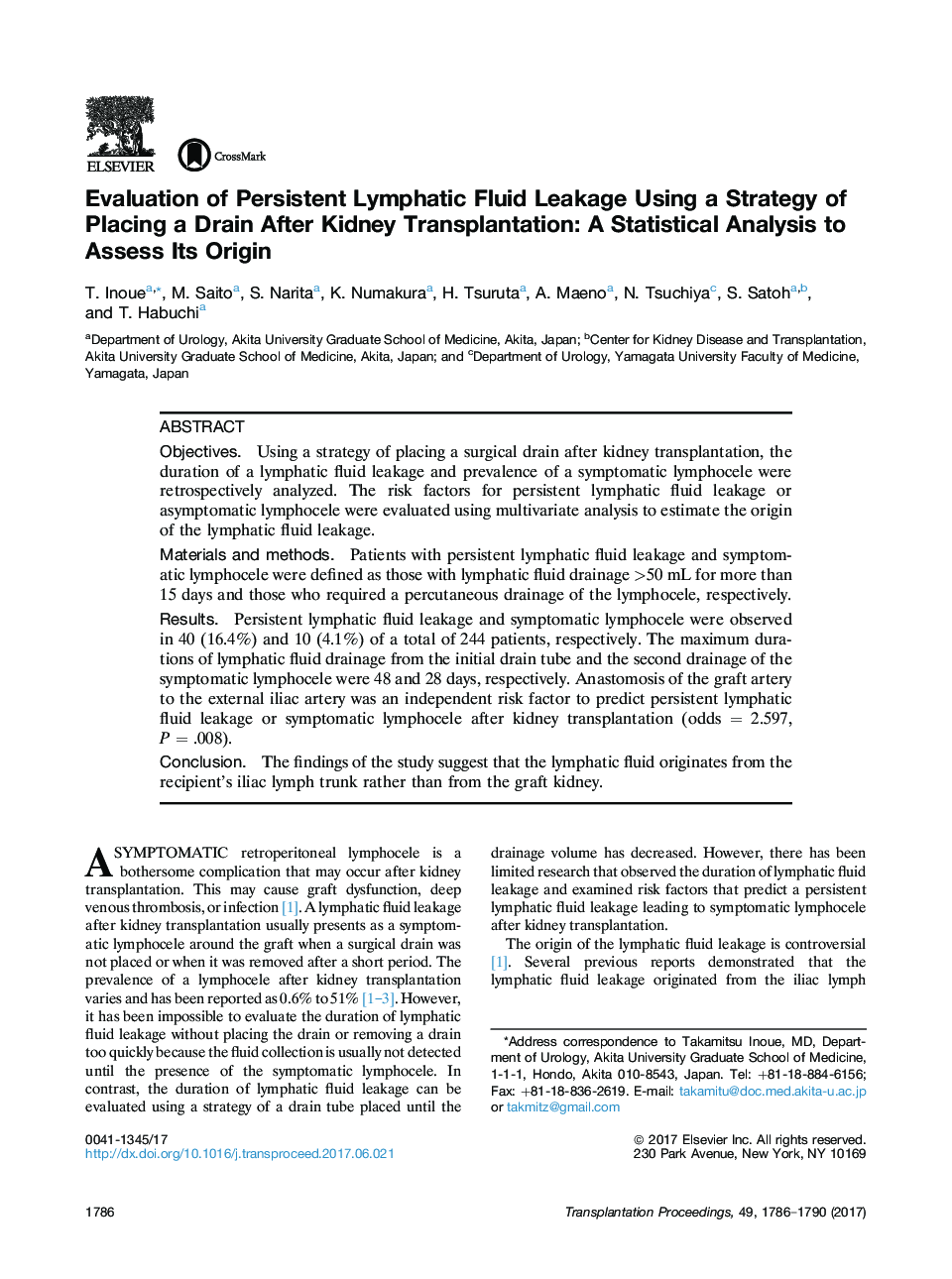| Article ID | Journal | Published Year | Pages | File Type |
|---|---|---|---|---|
| 5728631 | Transplantation Proceedings | 2017 | 5 Pages |
â¢Persistent lymphatic fluid leakage was defined as drainage >50 mL for >15 days.â¢Persistent lymphatic fluid leakage was observed in 40 (16.4%) of 244 patients.â¢Anastomosis to external iliac artery was a risk factor to predict lymphatic leakage.â¢Lymphatic fluid originates from the iliac lymph trunk rather than from the graft kidney.
ObjectivesUsing a strategy of placing a surgical drain after kidney transplantation, the duration of a lymphatic fluid leakage and prevalence of a symptomatic lymphocele were retrospectively analyzed. The risk factors for persistent lymphatic fluid leakage or asymptomatic lymphocele were evaluated using multivariate analysis to estimate the origin of the lymphatic fluid leakage.Materials and methodsPatients with persistent lymphatic fluid leakage and symptomatic lymphocele were defined as those with lymphatic fluid drainage >50 mL for more than 15 days and those who required a percutaneous drainage of the lymphocele, respectively.ResultsPersistent lymphatic fluid leakage and symptomatic lymphocele were observed in 40 (16.4%) and 10 (4.1%) of a total of 244 patients, respectively. The maximum durations of lymphatic fluid drainage from the initial drain tube and the second drainage of the symptomatic lymphocele were 48 and 28 days, respectively. Anastomosis of the graft artery to the external iliac artery was an independent risk factor to predict persistent lymphatic fluid leakage or symptomatic lymphocele after kidney transplantation (odds = 2.597, P = .008).ConclusionThe findings of the study suggest that the lymphatic fluid originates from the recipient's iliac lymph trunk rather than from the graft kidney.
